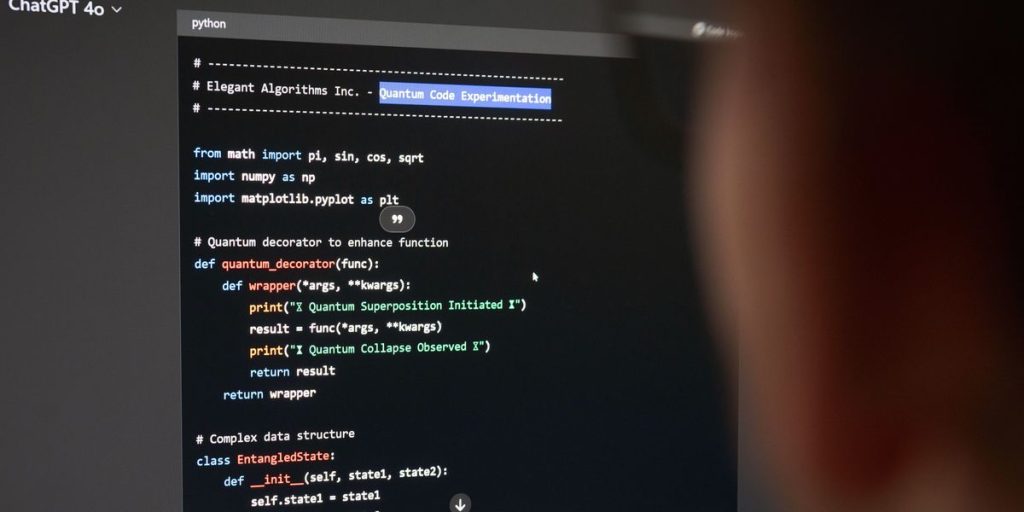“Wait! Am I a vibe coder?”
That was my reaction to Andrej Karpathy’s viral post describing his new “vibe coding” workflow. On 2 February, Karpathy—a computer scientist and founding member of OpenAI—defined it as a style of programming where software engineers “give in to the vibes, embrace exponentials, and forget that the code even exists.”
I understood what he meant, because I’d already practiced it. In the fall of 2024, I decided to see for myself what large language models could do and used them to revamp my personal website. I’ve since used AI to code several personal projects, including a graphical user interface (GUI) for AI speech-to-text transcription on my Windows laptop and a JavaScript app for tracking initiative in tabletop games.
Though I’ve played with HTML and Python in the distant past, my knowledge of programming is limited, and I can’t explain in detail how the AI-generated code in these programs functions. But they work, and the ease with which I created them has implications for software engineering.
What Is Vibe Coding?
Prasad Naik, a licensed professional mechanical engineer, is feeling the vibes.
Naik works at Gripple, a company that builds wire joining and tension systems used to secure a variety of infrastructure, such as plumbing and gas lines in commercial buildings. Naik isn’t a software engineer, but he recently developed two software tools for internal use. They help teams outside of engineering, such as the sales team, understand which product is right for a use case.
Naik began by revisiting an iPad app he developed for the company over a decade ago. He programmed it in C for use on an iPad, but he wanted to convert it to a modern JavaScript Web app. It was an intimidating project, as he’d never worked with JavaScript before.
“I remember that [the original app] took me almost a month, because I had to study a lot of things I didn’t understand,” says Naik. “To my surprise, I managed to [convert it to JavaScript] in just two hours, using step-by-step directions from ChatGPT.” Naik didn’t use the code exactly as generated, but estimates that more than 90 percent of the code he used was generated by ChatGPT.
After that success, Naik built a more complex app that connects to a server. The app accesses a database of spreadsheets containing information about hardware products, such as brackets and support systems used to hang pipes from ceilings in buildings. The entire development, including deployment, took about a week and a half, but Naik is doubtful he could have pulled it off without AI tools.
“It was fascinating. I never in my wildest imagination thought I would end up developing an app this complex,” Naik says.
Vibe Coding for Proof of Concepts
Jason Touleyrou, a data engineering lead who currently works for Corewell Health, uses AI-assisted coding to rapidly test new ideas. “Speed to ideation is critical,” he says. “If I have an idea, and my team isn’t on board, can I put together a scrappy project that proves its merit without wasting anyone’s time?”
Touleyrou has used AI to build with tools and programming languages he has little or no prior experience using. That, in turn, has helped him experiment with ideas that previously took too much time to explore.
As an example, he pointed to a coffee tracking tool he built for his personal website. The tool uses several Google Cloud services, such as BigQuery and Pub/Sub, which he’d never touched in his professional career.
The key to vibe coding, Touleyrou says, is the workflow. He believes projects should start with a well-defined idea before moving to ask an AI tool to generate code. Once the code is generated, the AI can move into an advisory role to assist with bugs. Developers should also continue to use tools that ensure code quality, such as linting tools that can identify obvious bugs.
“It’s not an alternative for knowing the basics. But I just can’t look back knowing that I can build my initial proof of concept in 30 minutes, and then also have four additional iterations in four hours. They might even add new features,” says Touleyrou.
The Limits of Vibes
Naik and Touleyrou have used AI to iterate on software more quickly and easily than before. But are they really vibe coding?
Taher Vohra, a software engineer with 25 years of experience in software engineering, contends that they’re not.
“I took the vibe-coding definition by heart, that I will not look at code,” he says. And, sticking to the literal interpretation of vibe coding, he quickly points out the idea’s shortcomings. “As I went deeper, I found that specifying what I want the AI to do is turning out to be a harder problem than doing it myself.”
That’s not to say Vohra is against using AI for programming, however. On the contrary, he uses multiple AI assistants, such as Cursor, to provide recommendations as he works. Still, he stresses that developers programming production-ready code need to keep their eyes on the code to ensure they have a proper understanding of how it functions and can identify subtle problems that an AI assistant may miss.
While Vohra’s take on vibe coding is more critical than Naik and Touleyrou’s perspective, they’re not entirely in disagreement. They all agree on a particular point: Vibe coding can help engineers gain skills in programming languages and tech stacks they don’t yet understand.
“My advice to junior engineers is, don’t just think of vibe coding a speed improvement for a skill you already have. Think of it as an accelerator for gaining new skills,” says Vohra. “If you’re a front-end engineer and want to become a full-stack engineer, it’s an excellent way to become a full-stack engineer in a few months, as opposed to two years.”
This article appears in the June 2025 print issue as “Engineers Are Using AI for ‘Vibe Coding.’”
From Your Site Articles
Related Articles Around the Web

